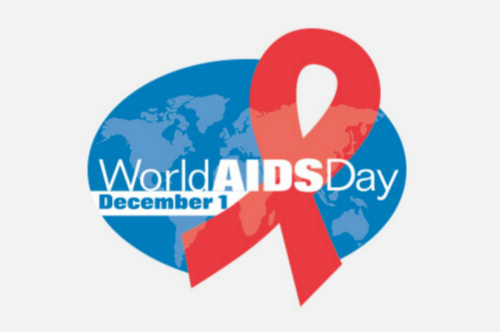
World AIDS Day Message文章源自英文巴士-https://www.en84.com/4111.html
世界艾滋病日致辞文章源自英文巴士-https://www.en84.com/4111.html
文章源自英文巴士-https://www.en84.com/4111.html
Michel Sidibé, Executive Director of UNAIDS, Under-Secretary-General of the United Nations文章源自英文巴士-https://www.en84.com/4111.html
艾滋病署执行主任、联合国副秘书长 米歇尔·西迪贝文章源自英文巴士-https://www.en84.com/4111.html
文章源自英文巴士-https://www.en84.com/4111.html
1 December 2017文章源自英文巴士-https://www.en84.com/4111.html
2017年12月1日文章源自英文巴士-https://www.en84.com/4111.html
文章源自英文巴士-https://www.en84.com/4111.html
This World AIDS Day, we are highlighting the importance of the right to health and the challenges that people living with and affected by HIV face in fulfilling that right.文章源自英文巴士-https://www.en84.com/4111.html
今年的世界艾滋病日将聚焦健康权的重要性与艾滋病毒感染者和受影响者实现健康权。
The right to health is a fundamental human right – everybody has the right to the enjoyment of the highest attainable standard of physical and mental health, as enshrined in the International Covenant on Economic, Social and Cultural Rights.
健康权是一项基本人权。《经济、社会及文化权利国际公约》规定,人人有权享有能达到的最高的体质和心理健康的标准。
The world will not achieve the Sustainable Development Goals – which include the target of ending AIDS by 2030 – without people attaining their right to health. The right to health is interrelated with a range of other rights, including the rights to sanitation, food, decent housing, healthy working conditions and a clean environment.
如果人们无法获得健康权,可持续发展目标(其中包括到2030年消灭艾滋病)就无法实现。健康权与其他诸多权利密切相关,包括享有卫生设施、食物、体面的住房、健康的工作条件和清洁的环境的权利。
The right to health means many different things: that no one person has a greater right to health care than anyone else; that there is adequate health-care infrastructure; that health-care services are respectful and non-discriminatory; and that health care must be medically appropriate and of good quality. But the right to health is more than that – by attaining the right to health, people’s dreams and promises can be fulfilled.
健康权包含许多不同的内容:人人享有同等的医疗保健权;享有适足的医疗保健基础设施;可获得尊重、非歧视的医疗保健服务;可获得医学上适当的和高质量的医疗保健服务。然而,健康权的意义不止于此。实现了健康权,人们的梦想和承诺就可以实现。
On every World AIDS Day, we look back to remember our family members and friends who have died from AIDS-related illnesses and recommit our solidarity with all who are living with or affected by HIV.
每一年的世界艾滋病日,我们都要缅怀死于艾滋病并发症的家人和朋友,并再次承诺我们将团结所有艾滋病毒感染者和受影响者。
From the beginning, the AIDS response was built on the fundamental right to health and well-being. The AIDS community advocated for rights-based systems for health and to accelerate efforts for the world to understand HIV: how to prevent it and how to treat it.
从一开始,艾滋病的防治就基于获得健康和福祉的基本权利。艾滋病团体主张建立以权利为基础的健康系统,并加快提高世界对艾滋病毒的认识,包括如何预防和治疗艾滋病毒。
Too many people – especially those who are the most marginalized and most affected by HIV – still face challenges in accessing the health and social services they urgently need. We all must continue to stand shoulder to shoulder with the people being left behind and demand that no one is denied their human rights.
有许许多多的人,特别是那些最边缘化和受艾滋病毒影响最大的人,在获得他们迫切需要的医疗和社会服务方面仍然面临挑战。我们都必须继续与掉队的人肩并肩站在一起,确保没有人被剥夺人权。
This year has seen significant steps on the way to meeting the 90-90-90 treatment targets towards ending AIDS by 2030. Nearly 21 million people living with HIV are now on treatment and new HIV infections and AIDS-related deaths are declining in many parts of the world. But we shouldn’t be complacent. In eastern Europe and central Asia, new HIV infections have risen by 60% since 2010 and AIDS-related deaths by 27%. Western and central Africa is still being left behind. Two out of three people are not accessing treatment. We cannot have a two-speed approach to ending AIDS.
今年,就实现90–90–90目标和到2030年消灭艾滋病的目标而言,我们已经取得了重大的进展。目前,有近2100万艾滋病毒感染者在接受治疗,部分地区新增艾滋病毒感染者和艾滋病导致的死亡人数正在下降。但是,我们不应自满。在东欧和中亚地区,自2010年以来的新增艾滋病毒感染者人数上升了60%,艾滋病导致的死亡人数上升了27%。西非和中非地区仍处于落后状态,三分之二的人没有获得治疗。我们不能采取所谓的两速方法来消灭艾滋病。
For all the successes, AIDS is not yet over. But by ensuring that everyone, everywhere accesses their right to health, it can be.
尽管取得了一些成就,艾滋病尚未消灭。但是,通过确保每个人,无论是何人,居住在何处,都享有健康权,就有消灭艾滋病的希望。

